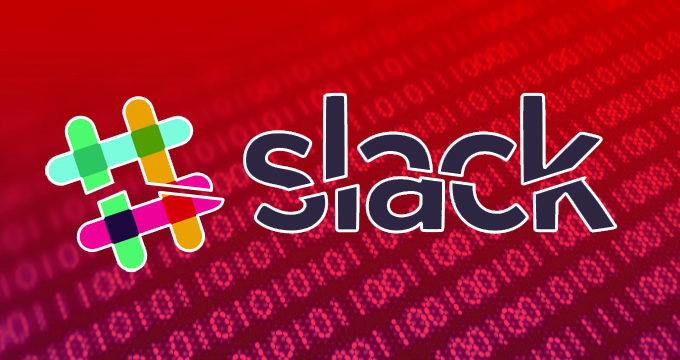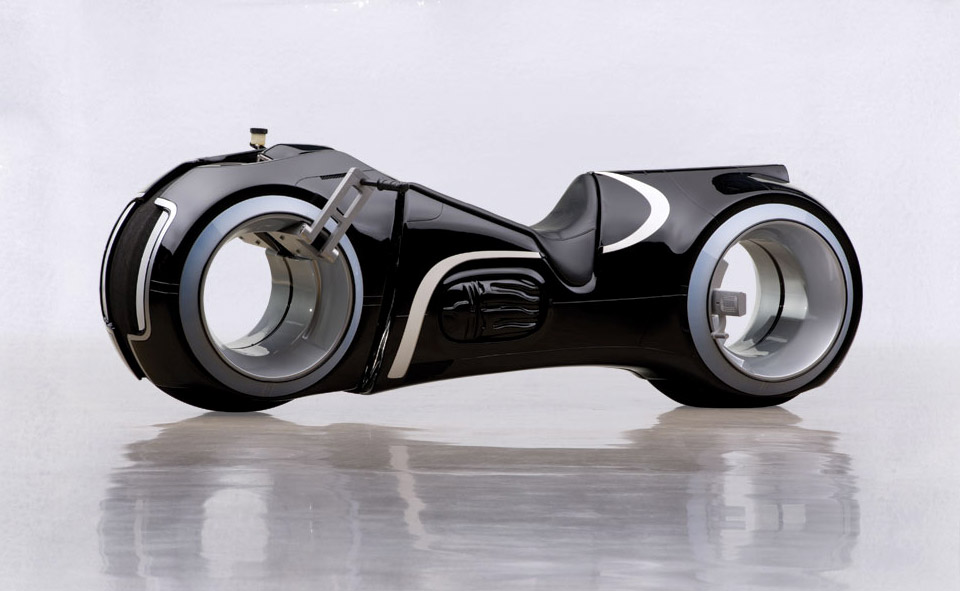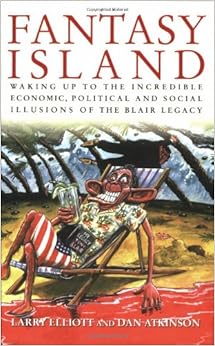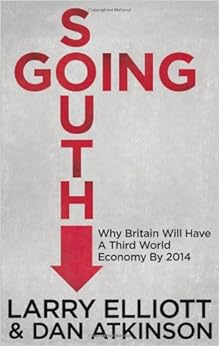Sections
- Pick of the Week – GAFAnomics, information and knowledge
- Manufacturers and Devices
- Google and Android and Cyanogen
- Apps and Services
- Design and Product Management
- Devops and APIs
- Security
- Wearables and the Internet of Things
- Artificial Intelligence and Big Data
- Future vehicles
- Software Development
- Inequality
- Hiring and Learning
- Work and Culture
Pick of the Week – GAFAnomics, information and knowledge
The global rise to dominance of the GAFA quartet of Google, Apple, Facebook and Amazon is analysed from an economic perspective in this recently published research note. The paper examines how “information is changing the production side of the economy” resulting in a Great Transition of corporate value from physical assets to intangible information assets embedded in networks. The extent of the shift is dramatically demonstrated by the way the GAFA quartet have significantly outperformed the rest of the market in recent years:
Traditional bricks and mortar corporations more comfortable dealing with atoms than bits are undergoing extinction level disruption from information networks. As previously pointed out in this blog, information networks have contributed to a collapse in transaction costs that has undermined the primary operational advantage big companies held over startups for decades.
The paper suggests that the ultimate source of GAFA dominance is engineering prowess. Not just in terms of quantity but the productivity of the top class engineers in their ranks. These four companies are simply operating on a totally different level to almost everyone else and profoundly understand that in order to exploit the full commercial potential of information they need large numbers of the most talented engineers:
Engineers as share of total employees. (from [pdf] http://t.co/FJMDwTOuCs) pic.twitter.com/ivHdOz5E9E
— Chris Dixon (@cdixon) March 28, 2015
GAFA power derives from having an elite workforce that has specialised knowledge of how to work with vast tracts of exponentially expanding information. The kind of knowledge required to operate in this space is entirely new in historical terms. Modern disciplines such as artificial intelligence, machine learning, data science, cloud devops and product analytics simply didn’t exist in their current form a generation ago. Acquiring these skills requires new approaches to learning which is where MOOCs come in. MOOCs are sure to play an ever more important role in society because they can provide specialised knowledge acquisition in areas that traditional general education is not geared up to address. We will need new tools and techniques to address the shrinking information-doubling factor:
“Google estimated in 2010 that there were 300 exabytes (that’s 300 followed by 18 zeros) of human-created information in the world, and that more information was created every two days than had existed in the entire world from the dawn of time to 2003.”
Manufacturers and Devices
- HTC have dropped their long-term CEO Peter Chou in favour of their current Chairwoman following three years of declining sales despite having a strong top-end smartphone portfolio. It’s a sign of just how tough it is to surf the smartphone wave.
- Kodak’s smartphone initiative was covered last week and now this follow-on NYT profile of the company outlines the extent of its decline since its 20th century heyday when it was arguably the Apple of its day. The article also outlines the company’s primary hope of for a turnaround, namely panning the vast Kodak patent portfolio for intellectual gold:
“What happens after a tech company is left for dead but the people left behind refuse to give up the fight? At Kodak the answer is to dig deep into a legacy of innovation in the photography business and see if its remaining talent in optics and chemistry can be turned into new money in other industries.”

- Microsoft are working on a build of Windows 10 that will run on the Xiaomi Mi4. The initiative has broad support from the top:
“At Xiaomi, we are very supportive of users trying new things and we encourage them to do so all the time! That’s why all of our devices ship with unlocked bootloader, for example.”
- The growing global popularity of hyperlocal Android OEMs has seen Cherry Mobile leapfrog Samsung to claim top spot in the Philippines. It’s a big deal as the territory is now the third biggest smartphone market in SouthEast Asia with a heavy focus on low end sub-$100 models:
“Sub-smartphone models worth PHP4,000 (US$90) accounted for more than 58 percent of smartphone shipments to the country last year.”

Google and Android and Cyanogen
- This in-depth profile of Indian OEM Micromax emphasise the crucial strategic importance of Cyanogen as the base platform for their smartphones. Rather tellingly:
“Micromax had realised some time ago that it had no future in being a commoditised and undifferentiated Android partner.
- The post offers other surprisingly blunt assessments of the realities of being a Google-flavoured Android OEM including this one from Micromax’s audacious founder Rahul Sharma pictured below appropriately enough with some billiard balls:
“Smartphone chipsets today are from Qualcomm and the operating system from Google. All the data goes straight to Google. What do we have? Even small things like when I am typing an SMS, why does an incoming call take up the whole screen? I can’t even control those. But why should it be like that? That’s when we realized we need to take control of our software and not send our customers to Google”

- Micromax’s rise highlights the rising importance of Cyanogen a an alternative platform for Android OEMs seeking to differentiate themselves in software and services. Forbes have published an in-depth profile of the “startup that wants to steal Android from Google” and its combative CEO Kirt McMaster who likes to “poke the bear”. It’s apparently a calculated gesture:
McMaster’s open swipes at Google may have ancillary benefits beyond generating headlines: They make Cyanogen visible enough that Google, which operates under the glare of antitrust regulators, may think twice before doing anything that could be construed as undermining a potential rival. It’s also what charges up McMaster. “As with any great myth, you need a common enemy,” he says. “Right now, Google is the common enemy.”
- The Register suggests that cheap Landfill Android smartphones “are proof that capitalism rocks” and that along with the shipping container “have done more for living standards generally than anything else at all over the past 50 years.“
- Google are introducing a smart lock mode called “on body detection” for Android 5.0+ devices that uses input from the accelerometer sensor to keep your device unlocked while it is assumed to be in your hand or pocket. It appears to be (yet another) feature baked into Google Services rather than vanilla Android.


- Android Auto has been officially released by Google for Lollipop based devices for compatible car head units which right now are limited to one manufacturer, Pioneer:

- Android for Work was subjected to an in-depth review by ArsTechnica. They found much to admire but also some major issues with the complexity of setting it up. The end result is the slightly odd juxtaposition of dual persona apps on a single screen including in this case a version of Angry Birds that is SFW:

Apps and Services
- Twitter video broadcasting startup Meerkat
is nowwas valued at $40m last week. It just crashed and burned over the course of this weekend after Twitter launched an integrated alternative, Periscope. You shouldn’t believe everything you read in blogs:
“Almost precisely one year later, the same crew of tech “journalists” who proclaimed Secret would be massively influential, declared Meerkat the next huge social media app. With almost supernatural synchronicity, Meerkat has just peaked at No. 140 on the U.S. iPhone download chart and gone into a heart-stopping tailspin after raising a ton of money from credulous investors.”

- A Forbes tweet highlights how the app industry has changed over the last four years. In 2011, fully 17 of the top 20 propositions in the App Store top 20 were games. Today it’s just 4 with Facebook and Apple properties dominant:
There is a shift happening in the app industry: http://t.co/zN2KWmYSa2 pic.twitter.com/skZNHXx1DM
— Forbes Tech News (@ForbesTech) March 29, 2015
Design and Product Management
- Steve Sinofsky makes a distinction between minimalist and frictionless design in this learningbyshipping blog post. The former has a focus on “reducing the surface area of an experience” and the latter is about “reducing the energy required by an experience“. Sinofsky goes on to detail six key design patterns:
- Decide on a default rather than options
- Create one path to a feature or task
- Offer personalization rather than customization
- Stick with changes you make
- Build features, not futzers
- Guess correctly all the time
- Sinofsky emphasises that constant discipline is required by product managers to ensure new features avoid friction creep:
“the real design challenge is not simply maintaining minimalism, but enhancing a product without adding more friction. Let’s assume you built a product that does something very exciting and has a very low friction to usage and does so with a minimal feature set. The next efforts are not about just watching your product, but about deciding how to address shortcoming, enhance, or otherwise improve the product to grow users, revenue, and popularity. The risk with every change is not simply failing to maintain minimalism, but introducing friction that becomes counterproductive to your goals.”
- There’s also the added danger of complexity creep which is well explored in an excellent companion FirstRound post by Kris Gale, Yammer CTO. Gale positions software engineering in ROI terms since “good engineering is about finding the most cost-effective solution to a problem, whether that cost is measured in dollars, hours, morale or lost opportunities” and all new feature requests need to be considered in that light:
“The work of implementing a feature initially is often a tiny fraction of the work to support that feature over the lifetime of a product, and yes, we can “just” code any logic someone dreams up. What might take two weeks right now adds a marginal cost to every engineering project we’ll take on in this product in the future. In fact, I’d argue that the initial time spent implementing a feature is one of the least interesting data points to consider when weighing the cost and benefit of a feature.”
Devops and APIs
“Their main focus is to make designing, deploying and managing an API easier, as well as to ensure that it is safe, secure and functional. “
- Microservices may be hot but the chances are that you’re not going to be doing them right in a typical Enterprise environment for all the usual political and organisational reasons:
“ask your VPs of engineering what they would say if their internal teams were organized like Amazon. They would spoil their pants. Your company probably doesn’t and probably won’t get microservices right.”
- Microsoft Technet skills blog post discloses an interesting data point: “20% of Azure virtual machines run on Linux“.
Security
- The DDoS attack on Github must stop but a righteous tech blog post probably won’t deter those behind it. The story hasn’t been extensively covered in the non-tech media.
- Slack hasn’t been able to put a foot wrong in the last year and has become the poster. Well, they just disclosed a serious breach of security and introduction of 2FA in one fell swoop. It’ll necessitate a change of Slack password for most as well as a scramble to enable 2FA.

Wearables and the Internet of Things
- Interview with TagHeuer’s General Director Guy Sémon in which he suggests”the Apple Watch is not a watch” and outlines the core challenge for their own smart watch ambitions:
“Why would you spend a lot of money on a watch? Because it is absolutely emotional. A connected device is absolutely rational. It’s totally different — the opposite. The challenge is how to connect both.”
- Meanwhile Apple are training staff to provide fashion tips to would be Apple Watch purchasers. It’s a well-worn technique used in high end personal retail joints to spot the right watch for a prospect:

- Fashionable or not, the Apple Watch apparently won’t include a web browser. Even so, Fortune predict there will be round the block queues for the $10k+ gold watch once it launches. As with iPhone6 last year, it’ll be mainly down to ‘scalpers’ operating to order for the Chinese black market.
- Neither will this wonder – an Enigma watch from Hackaday:
- The Internet of Things “could be worth £100bn to UK start-up companies within 10 years” according to a Cisco study. Healthcare alone could make up half that figure with Smart Retail accounting for the bulk of the other half.
- Facebook announced a new SDK for Parse that will support “web connected devices for the smart home” raising the prospect of that the company will become a significant player in the IoT landscape.
- A laser oscilloscope built using lego and a Raspberry Pi:

Artificial Intelligence and Big Data
- HBR on the potential for Artificial Intelligence as an Enterprise business tool. Specifically, machine learning offers a way to replace human quants in model construction across a range of industries from healthcare to travel to transform the analysis of Big Data:
“AI historically was not ingrained in the technology structure. Now we’re able to build on top of ideas and infrastructure that didn’t exist before. We’ve gone through the change of Big Data. Now we’re adding machine learning. AI is not the be-all and end-all; it’s an embedded technology. It’s like taking an application and putting a brain into it, using machine learning.”
- Relatedly this IDG survey highlights the critical importance of data analytics for SMEs right across the spectrum. A significant majority are either undertaking or planning to undertake Big Data projects in 2015:

- Hadoop is a key component in the technology stack used today to support Big Data analysis. However, it is batch-based in nature and Matt Asay suggests it may eventually find competition in the form of “streaming analytics” propositions which have a different configuration built around Apache Spark which as highlighted a few weeks ago is increasingly influential:
“First there’s a queuing system, with Kafka, RabbitMQ, and Kinesis the likely suspects. Then there’s a stream processing layer, which might include Storm, Spark Streaming, or Samza. For high-speed storage, companies often turn to Cassandra, HBase, MongoDB, or possibly a relational database like MySQL.”
- Steve Wozniak joins the ranks of those officially concerned by the prospect of AI surpassing human intelligence. He’d be even more concerned after reading this book which outlines how “with a bit of technical knowledge and a good imagination, any malevolent person may soon be able to eradicate the human race“. It’s a grim message with little upside and the authors suggest that ever greater vigilance is needed to avert tomorrow’s techno-threats. One of which includes being murdered by a robot just for good measure.

- Right on cue, Wired on the 3D printed “bionic ants” created by a German engineering company, Festo. They presumably adhere to the ‘Anternet’ protocol suite:
“The BionicANTs are programmed to mimic the intelligence of their real world counterparts — including their ability to co-operate and complete fiendishly complex tasks, such as moving objects much larger than themselves, which they’d be unable to do alone.”
Future vehicles
- A replic Tron lightcycle is up for auction at $40k.

- Mercedes’ luxury self-driving car seems to take some design tips from sci-fi including Tron. Reality mirroring art?

Software Development
- InfoQ post on the architecture of Uber’s real-time dispatch platform reveals a curious mixed bag with a surfeit of Node.js:
“the dispatch system is mostly built with NodeJS, but … Uber wants to switch to io.js, a NodeJS fork. … Maps and ETAs are written in several languages, such as C++ and Java, due to the need to integrate with different kinds of services. All their business logic is written in Python. Uber is building their own column-oriented distributed data store but they also use Postgres, Redis, MySQL and Riak.”
- Interesting Quora post contrasting the relative merits and demerits of Scala vs. Go ends up pretty even. Both have their place depending on circumstance.
- TechInAsia profile First Code Academy, a Hong Kong-based coding school for kids.
Inequality
- Thought-provoking post on inequality TED pundit Anand Giridharadas provides this nested-if test:
“If you live near a Whole Foods; If no relative of yours serves in the military; If you’re paid by the year, not the hour; If no one you know uses meth; If you married once and remain married; If most people you know finished college; If you aren’t one of 65 million Americans with a criminal record. If any or all of these things describe you, then accept the possibility that, actually, you may not know what’s going on, and you may be part of the problem.”
- Tim Cook is one of the 1% but it seems he won’t stay that way. He’s indicated he’ll be donating his vast fortune to charity within his lifetime.
Hiring and Learning
- This fantastic FirstRound post on hiring “consistently remarkable data scientists” by Sailthru Chief Data Scientist Jeremy Stanley underscores the need for rigour and consistency of approach. The process starts with a ‘home test’ followed by a demanding ‘Data Day’ on site which includes lunch. At the end of the day, if there is a unanimous consensus across the interviewing team that the candidate will fit in, an offer is made. At every stage there is a winnowing out that will be unfamiliar to many working in less demanding organisations:
“Of 500 inbound applicants, 250 (50%) will submit a take-home test, 25 (10%) will pass, 20 (80%) will come to the data day, 4 (20%) will pass the Data Day, and then 3 (75%) will accept the offer. That means in order to find a single great hire, we need over 150 applicants.”

- The Coursera hiring playbook for competing against Google and Facebook for the best engineering talent on the market ranges from initial candidate sourcing, reaching out for a coffee, interviewing and closing the deal. It’s yet another exhausting reminder of the critical importance of hiring in tech companies reflected in the sheer effort and time that goes into the process. And another validation of the growing societal impact of MOOC providers.
-
The Quora responses on “the toughest coding question faced in an interview” include one which if connected with the sort of funnel outlined above offers the nefarious possibility of constructing an alternative shadow engineering pipeline filled by interviewees…
“One company gave me a large piece of source code and told me to modify it to perform an extra task. I found this much more difficult than the typical whiteboard questions and after 90 minutes I still had not completed Problem 1a. The hard part was figuring out which part of the code was relevant to the problem.”
Work and Culture
- Will Hutton presented a compelling Channel 4 documentary called Selling off Britain in which he asked why Britain hasn’t been able to create a company like Google or Apple. His answer was that our best corporate prospects are routinely sold for a quick profit once they start looking promising. For Hutton it contributes significantly to a dumbed-down, low-wage Britain which risks ending up as an economic has-been without drastic correction. It echoes the grim conclusions reached by Larry Elliott and Dan Atkinson in a memorable series of books examining our broken domestic economic landscape:


- Do you really need to hold that meeting? You probably already know the answer to that. In case not, HBR have a decision tree with a range of alternatives helpfully built-in for you:

- InfoQ post on how to boost employee happiness without spending any money suggests the following six key areas of focus:
- The Freedom To Set (And Achieve) Their Own Goals
- Clarity And Purpose
- Opportunities To Tackle New Challenges And Grow
- Mentorship And Support
- A Place To Share Ideas And Even Complain
- A Team They Can Rely On
